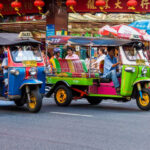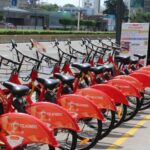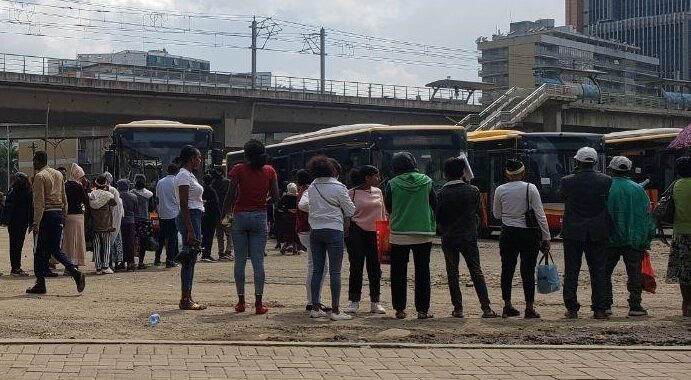Recent Posts by Ben
Public transport is one of the best, most cost-effective solutions available to address today’s climate and development challenges. Buses and trains can reduce greenhouse gas (GHG) emissions by up to two-thirds per passenger, per kilometer compared to private vehicles. The UN’s latest ...

Over 50% of all transport-related emissions come from high-income countries, where people are more likely to own and depend on personal vehicles. Meanwhile, less than 1% is generated by low-income countries in regions like sub-Saharan Africa and Latin America. In these ...

Public transport is a powerful tool to curb climate emissions and to reduce dependence on private motorized vehicles – not to mention to provide more equitable and affordable access to opportunity for riders. But surprisingly few countries have made public transport part ...

Long queues for public transport have become common sights during peak hours all over Addis Ababa, Ethiopia. Under the hot sun or the heavy rain, people anxiously wait for the next public transport to arrive. Frustrated and eager to reach ...

The coronavirus pandemic hit public transport hard. Global ridership tanked initially by as much as 80%, and transit was still at around just 20% of pre-pandemic ridership at the end of 2020. There is serious concern that people will increasingly opt for private vehicles, should public ...

The global coronavirus pandemic brought a wave of public and private initiatives to help societies adapt and recover, from economic stabilization and safety measures to new business models and shifts in consumption. Many of these initiatives are not green, despite ...

Left unchecked, urban freight will continue to be a major driver of the global climate crisis.

This is part one of our series on urban freight and achieving a “triple zero” bottom-line: zero emissions, zero road deaths and zero exclusion from core services and opportunities. A line of trucks files patiently into the Port of Shenzhen. ...

There’s no question we’re going through unprecedented times for public transport. Ridership is down anywhere from 60% to 90%. Transit agencies are hemorrhaging cash, with fare revenue following ridership down the tube. But the fact is that throughout the tremendous ...

The COVID-19 crisis has shown that effective public transport is vital to keeping cities running. By serving essential workers in health care, emergency services, food services, and other sectors, public transport has become a service not just for some people ...

The fundamentals of urban mobility are changing rapidly. Apps like Uber and Lyft are becoming ubiquitous around the world and new modes like electric and shared bicycles and scooters are on the rise. The conversation is increasingly trending toward mobility ...

With ride-hailing services like Uber and Lyft continuing to gain popularity and drawing attention for their impact on congestion and other urban ills, cities from Washington to São Paolo are moving to the seemingly inevitable next step: special taxes. This is unsurprising. ...

In 2015, the global community committed to halving road deaths and serious injuries by 2020. But city streets are still not safe. More than 3,200 road fatalities occur every day, and this number is expected to increase threefold by 2030, ...

Fewer than 3 people per 100,000 are killed in road crashes in Sweden every year, less than almost anywhere else in the world. In contrast, it’s 11 per 100,000 in countries like India and the United States. One reason for ...

This series, supported by the Volvo Research and Educational Foundations, discusses walking and cycling in cities with a special focus on low- and middle-income countries. Many cities have streets that make life difficult for pedestrians in ways that are not always ...

 Phil
Great article! A lot of what I have read here, has already been implemented in cities in the Netherlands, with Denmark the two bicycle countries par...
Phil
Great article! A lot of what I have read here, has already been implemented in cities in the Netherlands, with Denmark the two bicycle countries par...
 Bobby Salvin
I understand why some people wish mobility and GDP weren't connected, but it's wishful thinking. During the pandemic, for instance, when the economy...
Bobby Salvin
I understand why some people wish mobility and GDP weren't connected, but it's wishful thinking. During the pandemic, for instance, when the economy...
 Peace
Let me understand your Position -
We need to make our streets and public spaces dangerous and inhospitable so the disabled and infirm are forced to...
Peace
Let me understand your Position -
We need to make our streets and public spaces dangerous and inhospitable so the disabled and infirm are forced to...






















